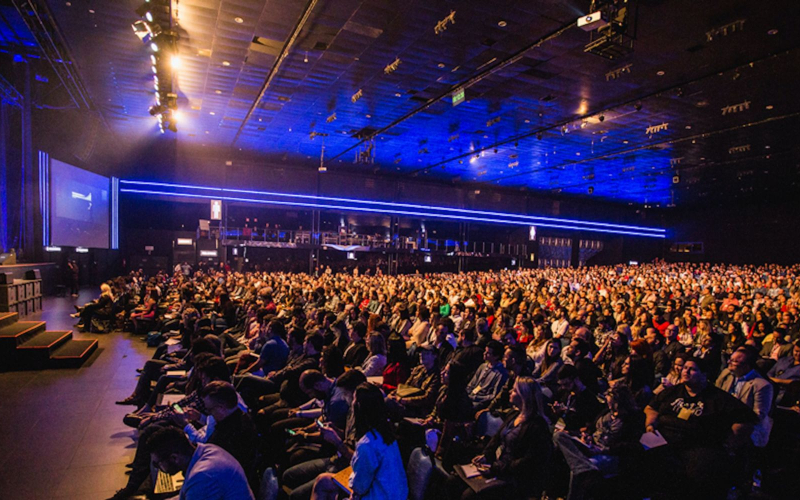How Much Does It Cost To Open A Herbalife Nutrition Club

Start-Up Costs
The average start-up cost for a Herbalife Nutrition Club is $3,500 to $5,500. This includes the initial inventory of products, supplies, and marketing materials, as well as the costs associated with renting a retail space.
Franchise Fee
To become a Herbalife Nutrition independent distributor, also known as a member, you must purchase a starter kit. The cost of the Herbalife Nutrition starter kit varies depending on which country you live in, but the average cost is around $94. The starter kit includes products, sales aids and materials to help get you started selling Herbalife Nutrition products.
In addition to the cost of the starter kit, there is also an annual membership fee of $34.95. This fee gives you access to member-only benefits such as a personal website, product discounts and training materials.
Equipment
You'll need a few pieces of equipment to get started. Here's a list of what you'll need and how much it will cost:
-Table and chairs - $100
-Herbalife Nutrition products - $500
-Business license - $50
-Insurance - $200
-Total start-up costs - $950
Inventory
You will need to take inventory of the items you already have on hand, as well as anything you will need to purchase. Below is a list of common start-up costs for a new business:
-Rent or mortgage payments
-Insurance
-Utilities
-Permits and licenses
-Inventory
-Advertising and marketing
-Website development
-Consultants
-Legal fees
Leasehold Improvements
Leasehold improvements are physical changes made to leased space to fit the lessee's (i.e. your) business needs. These changes can be as simple as painting walls and putting up signage, or as involved as moving walls and adding new electrical outlets. No matter how big or small, all leasehold improvements are capitalized and depreciated over the length of the lease.
Insurance
Starting a Herbalife Nutrition club is a great way to help people in your community improve their health and wellness. Before you can open your doors, however, there are a few start-up costs you need to consider, including insurance.
Insurance is an important part of any business, but it is especially important for businesses that deal with food and health products. Herbalife Nutrition clubs will need to have liability insurance in case someone gets sick from consuming one of the products sold at the club. You will also need to insure any equipment or property used by the club.
The cost of insurance will vary depending on the size and location of your business, as well as the amount of coverage you need. Be sure to speak with an insurance agent before you open your Herbalife Nutrition club to get an accurate estimate of the cost of insuring your business.
Licenses and Permits
Opening a Herbalife Nutrition club requires obtaining several licenses and permits from the state and local government. The type of license you need depends on the products you will be selling and the services you will be providing at your club.
Herbalife offers two types of products: herbal supplements and meal replacement shakes. If you plan on selling both types of products, you will need to obtain a license to sell dietary supplements as well as a license to sell food products.
To sell dietary supplements, you will need to obtain a license from the state Department of Health. To sell food products, you will need to obtain a license from the local county health department. Depending on the county, you may also need to obtain a business license from the city government.
In addition to licenses and permits, you will also need to obtain insurance for your Herbalife Nutrition club. Insurance protects your business in case of accidents or injuries that occur on your premises. You should speak with an insurance agent to determine what type of insurance policy is right for your business.
Training
Training might be the most important start-up cost for your business. If you're starting a restaurant, you and your staff will need food safety training. If you're starting a daycare, you'll need CPR training and child care training.You can get training from many sources, including:
-Community colleges
-Trade associations
-Professional organizations
-Online courses
-Your local Chamber of Commerce
Operating Costs
Before you open your doors, you need to know how much it will cost to keep the lights on and the products stocked. An important part of Herbalife Nutrition Club’s allure is its affordability, and part of that comes from having low operating costs.
Advertising
Advertising is any form of paid communication intended to persuade an audience to take some action, buy a product, or support a cause. The purpose of advertising is to sell a product or service by creating an emotional connection with the customer. This emotional connection is created by using various techniques, such as Copywriting, Design, and emotionally charged images.
The cost of advertising depends on the platform used, the size of the audience reached, and the duration of the campaign. For example, a national television campaign can cost millions of dollars, while a local newspaper ad may only cost a few hundred dollars.
Rent
The cost of rent will vary depending on the location of your Herbalife Nutrition Club. A typical retail space in a good location can cost anywhere from $1,500 to $3,000 per month. Herbalife Nutrition Clubs are typically between 1,200 and 1,500 square feet, so you'll need to factor in the cost of leasing additional space if you plan on adding additional features like a juice bar or smoothie station.
Utilities
Utilities are defined as the gases, electricity, water, and trash removal that a business needs to function on a daily basis.
While some businesses may use more utilities than others, all businesses will have some sort of utility costs. The three major types of utilities are:
-Gas: This is the cost of running any gas lines to your business. This is usually only a cost for businesses that have some type of manufacturing or cooking process.
-Electricity: This is the cost of running any electric lines to your business. This is a common utility cost for all types of businesses.
-Water: This is the cost of running water lines to your business. This is a common utility cost for all types of businesses.
Payroll
Labor is often the single largest variable cost in a business, making payroll a critical area to control. To get a handle on this area, businesses need to track payroll costs on a regular basis.
There are two types of payroll costs: direct and indirect. Direct payroll costs are those that are related to the actual wages paid to employees. This includes both hourly wages and salaries. Indirect payroll costs are all of the other costs associated with running a business, such as taxes, benefits, and insurance.
Businesses need to track both direct and indirect payroll costs in order to get a true picture of their labor expenses. By understanding these expenses, businesses can make informed decisions about where to cut costs and how to invest in their workforce.
Inventory
Inventory is the collection of finished products that a company has in stock. It is an important part of the business because it represents the products that are available for sale. The level of inventory a company keeps on hand depends on many factors, including the type of business, the demand for the products, and the Lead time (the time it takes to produce a product).
Inventory can be classified in several ways, but one common method is by inventory turns. Inventory turnover is a measure of how often a company sells and replaces its inventory over a period of time. A high inventory turnover means that a company is selling and replacing its inventory quickly, while a low inventory turnover indicates that it takes longer to sell theinventory.
There are several advantages to having a high inventory turnover. First, it allows a company to sell its products before they become outdated or obsolete. Second, it minimizes the amount of storage space needed to keep inventory on hand. Third, it reduces the risk of theft or damage to inventory. Finally, it saves money by reducing the amount of money tied up in inventory.
Bank and Credit Card Charges
Bank and credit card charges for opening and maintaining a merchant account for your nutrition club can add up. These costs are typically charged as a percent of each credit card transaction, so they will be higher if you have a lot of customers paying with credit cards. You can reduce these costs by encouraging customers to use cash or debit cards, which usually have lower transaction fees.
Potential Revenue Sources
Membership Dues
The main source of revenue for Herbalife Nutrition Clubs is membership dues. These are monthly fees paid by members to use the facilities and receive coaching and support from club staff.
There are three membership tiers at Herbalife Nutrition Clubs:
-Basic: $59 per month
-Premium: $119 per month
-VIP: $199 per month
Members can also purchase additional services, such as one-on-one coaching, group fitness classes, and meal plans. These services are not required but can help members reach their fitness goals more quickly.
Product Sales
Product Sales- The primary way that owners generate revenue is through sales of Herbalife products. Most of these products are consumables, meaning that customers must purchase them on a relatively frequent basis to see results. Because of this, many Herbalife Nutrition Clubs have been able to build a base of regular customers who purchase products on a monthly basis. If you're able to attract and retain a significant number of customers, you could generate a healthy amount of revenue through product sales alone.
Service Sales
Service sales are retail sales made by employees of the company to customers. These sales typically include a consultation to determine the customer's needs and then a recommendation of products that will address those needs. Service sales can be made in person, over the phone, or online.
Other
In addition to the membership fee, Herbalife Nutrition Clubs can generate revenue through the sale of Herbalife products, service fees, and other merchandise.
Herbalife products are available for purchase at a discount to members and can be sold for a retail profit to non-members. Clubs can also charge service fees for things like product consultations, fitness classes, or other health and wellness services.
Finally, clubs can generate additional revenue by selling other merchandise such as apparel, water bottles, and supplements.








